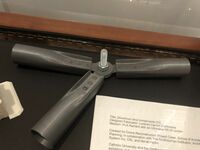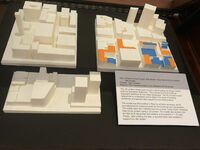Additional Architecture Pieces
Catholic University and the Smithsonian recently collaborated on a live exhibition at the National Museum of American History. One of the highlights of the exhibition was the reconstruction of a Jeffrey Lindsay and Buckminster Fuller Dome from the 1950s. The joint components of the dome were accurately portrayed through a 3D-printed model, showcasing the aluminum connections' intricate details.
This model served as a valuable tool for architecture students, providing them with a clear understanding of the assembly process after fabrication. It was specifically designed for classroom use, as the original museum objects were deemed too delicate to be handled.
To create this model, Lorenzo Cardim DeAlmeida painstakingly utilized Rhino, a 3D modeling software, to meticulously recreate the individual pieces at the Smithsonian. These pieces were then produced using one of our Ultimaker S5 3D printers.
Architecture student Ryan Dobson used 3D printing to help visualize his thesis.
The 3D printed model was crucial in showcasing my thesis master plan for downtown Baltimore. The orange and blue buildings represent additions to the urban landscape. The 3D printed model helped me to understand and to depict the scale of existing structures and spaces with respect to new interventions.
The model was first crafted in Revit to achieve accuracy, which provided precise measurements for the buildings and topography. The solids were then transformed into a mesh using Rhino, enabling them to be printed using a 3D printer. The model was divided into ten tiles to fit the printer bed surface and scaled to a 1:10 ratio. Finally, after printing the tiles, a wooden base was created to support the site model.



